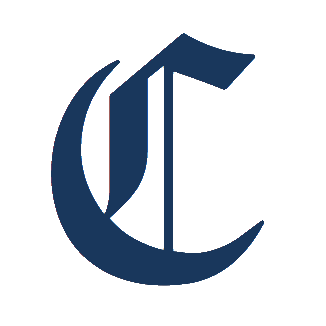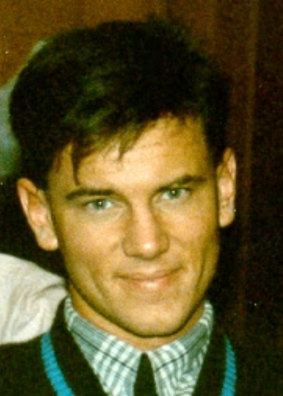
On May 8, 1970, less than a year after the Stonewall Uprising, an anonymous classified advertisement ran in the Campus Times: “TAKE HEART BROTHERS, Gay Lib is coming!”
A somewhat open-ended statement, the words were indication that something was brewing. And on Sep. 29, 1970, that ad was followed up by another notice in the CT:
“GAY LIB: UR Gay Liberation Front will hold an interest meeting 7:30 pm, Saturday, October 3, Todd music room, with a speaker from The Cornell Student Homophile League. Open to all people who believe that realization of basic civil rights for all minority groups must come from organized effort.”
This marked the first announcement of UR’s Gay Liberation Front (GLF) — formed by Bob Osborn ‘74 with Larry Fine ‘72, the man who took out the May ad, as a founding member.
The UR GLF was the third GLF chapter in New York state and the “first active gay organization in Rochester,” as reported by Landmark Society of Western New York Preservation Planner Megan Klem in an article published in Landmarks. The first organized touch point (that was not a bar) for LGBTQ+ community members and the basis of soon-to-grow local LGBTQ+ liberation activist networks, the group was a leap forward in Rochester’s civil rights movement.
And on Oct. 3, to commemorate 50+ years of local LGBTQ+ activism and the pending nomination of Todd Union to the National Register of Historic Places — thanks to the building housing UR GLF’s office and meetings — the University held a Meliora Weekend panel and Q&A discussion about the history and impact of the GLF. The panel featured two inaugural members of the GLF — Patti Evans and Marlene Gordon — alongside Victory Alliance Director Dr. Michael Keefer, former PRIDE Network President Miles Perry ‘20, and current senior and Burgett Intercultural Center (BIC) Senior Program Assistant Flora Roman, with moderation by Political Science and History Professor Gerald Gamm.
Gordon, who had to leave early for a 50th class reunion celebration, kicked off the discussion by recounting her time in the GLF and her experience after graduation as well.
She was drawn into her first GLF meeting by an ad in the CT. Gordon entered nervously, not totally sure why she was attracted to the group in the first place. The GLF was mostly made up of people from the city, and she was confronted by a question that was somewhat uncomfortable to her: “Are you gay?” She did not know, but she was about to visit her first gay bar — a first step in her up-and-down coming-out journey.
She also reminisced on the first GLF dance. She described it as a “joyous experience” and sort of underground, like the whole of the GLF, though Patti Evans said the dances were heavily noticed because they were located in what is now Douglass Dining Center and, perhaps more importantly, because they offered free music and free beer.
Memory of one such “Liberation Dance” was enshrined in an unattributed letter to the editor, titled On Norms and Nature, published in the December 11, 1970 edition of the Campus Times:
“What happened in the MDC [Men’s Dining Center] lounge Saturday, December 5? I was there; let me tell you a little about it. There were male homosexuals, female homosexuals, heterosexual women, heterosexual men, blacks and whites. What was such an unusual conglomeration of people doing in the lounge? They were participating in the most progressive and beautiful activity I’ve ever seen on this campus.
It was the Liberation Dance sponsored by the UR Gay Liberation Front and UR Women’s Liberation. But more than a dance, it was a unique experience in human interaction, free from the rules and regulations of a society that dictates to its people what is and is not natural for them. I believe the people in attendance found out more about human nature than they ever could from one of our current textbooks.
What’s more, perhaps for the first time in their lives, these people found out what homosexuals are: a group of people who are in no way but their sexual orientation different from any other group of people; people who enjoy each other’s company and who interact with each other with warmth and sincerity.“
After graduating, Gordon said she became a teacher in the Rochester City School District and became very closeted again until she went off to California to work on Harvey Milk’s campaign.
“When he was murdered, it scared the hell out of me,” Gordon said. “I found it very, very, very scary. And so I do think it’s important to talk about how it was then. I have a feeling that people growing up now in the movement or coming into their sexuality now just wouldn’t have any ideas. It’s just so, so different. It’s kind of amazing that the group formed and that things have progressed.”
The conversation then shifted to Patti Evans’ recollection of those early months. Evans, who was from New York City, had found herself in the middle of the Stonewall Uprising when she was 17, according to an interview she conducted in 2019 with the Democrat and Chronicle.
She met a woman at a lesbian bar who told her about a “peaceful candlelight march” being held to protest a police raid on a gay bar the night prior. They walked over, and Evans said the description of the protest as peaceful was apt until police lined the marching route and heard the sound of breaking glass, prompting the police to turn hostile. One officer began dragging Evans away, but he let her go and told her to go home.
Evans later came to UR and was roped into the GLF by its founder, Bob Osborn, a physics PhD student who was active in the civil rights movement. She said there were only about five students at the early GLF planning meetings (amid many more community members), but that she found community in the group.
Much of the rest of the conversation centered on the perspectives of the more recent students, Perry and Roman, who talked about trying to make PRIDE Network more intersectional in the wake of the 2015 Obergefell v. Hodges Supreme Court decision that legalized gay marriage nationwide. Perry founded Queer Students of Color (QSOC) under the PRIDE Network banner, and Roman joined after being underwhelmed with PRIDE Network’s discussions.
“I went there and, for one, it was like five people,” Roman said. “And even then it was like all white people and it was very much like the conversation was just very much like, ‘I don’t know what we’re talking about. I don’t know why I’m here.’ And I felt a little discouraged because I was like, once again, I wanted to do something. I wanted to see something. I wanted to see a community, and I didn’t see that. I kind of seeked comfort somewhere else.
“And that’s when I kind of ran into Miles and I heard of Queer Students of Color, and that’s where I kind of met, like, all of my friends. Because I think it’s so important. We are a community and we all have that identity. It’s so important. But, at the same time, as a person of color and as a Black woman, my experience is still different and I need to talk about that. Or when I experience microaggressions or things like that, I need to have that space where I can talk to other people who understand it.”








